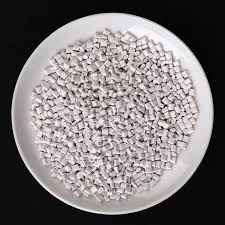Pentoxifylline An Overview of Its Uses, Mechanism, and Benefits
Pentoxifylline is a medication primarily used to improve blood flow in patients suffering from conditions associated with poor circulation, particularly peripheral vascular disease. It is classified as a xanthine derivative and is regarded for its unique mechanism of action that enhances microcirculation and tissue oxygenation. In recent years, its applications have expanded beyond vascular disorders, extending to various medical conditions.
Mechanism of Action
Pentoxifylline functions by increasing the flexibility of red blood cells and decreasing their aggregation. This leads to improved blood flow, especially to the small vessels and capillaries. The drug also inhibits platelet adhesion and aggregation, which can further enhance circulation. Additionally, pentoxifylline reduces blood viscosity, contributing to smoother blood passage through narrowed vessels. This multifaceted approach not only aids in alleviating symptoms associated with poor circulation but also enhances overall tissue perfusion.
Clinical Uses
The primary indication for pentoxifylline is to treat intermittent claudication, a condition characterized by pain in the legs due to inadequate blood flow during physical activity. Patients with peripheral artery disease often experience this painful condition, and pentoxifylline has shown efficacy in improving walking distance and reducing pain. Studies indicate that patients taking pentoxifylline report less discomfort and are able to engage in physical activities with greater ease.
Beyond intermittent claudication, pentoxifylline has been explored for various other indications. These include diabetic neuropathy, chronic venous insufficiency, and even certain skin conditions like leg ulcers. Preliminary research has shown promise in these areas, although the evidence is still accumulating and further studies are necessary to establish standardized guidelines for use.
Additional Benefits
pentoxifylline drug

Pentoxifylline's anti-inflammatory properties add another layer to its therapeutic potential. In conditions characterized by inflammation, such as autoimmune disorders and certain chronic diseases, pentoxifylline may provide symptomatic relief. The drug has been studied for its effects on reducing inflammation markers and may offer adjunctive benefits in treating chronic inflammatory diseases.
Moreover, pentoxifylline has also garnered attention in the management of liver conditions, particularly in the context of alcoholic liver disease and hepatitis. Its ability to improve blood flow to the liver and reduce tissue hypoxia may offer protective benefits in these scenarios. While more research is needed to solidify its role, these findings highlight the drug's versatility beyond its traditional uses.
Side Effects and Considerations
Like all medications, pentoxifylline is not without potential side effects. Common side effects include gastrointestinal disturbances, headaches, dizziness, and skin reactions. In rare cases, more severe complications such as hypotension and arrhythmias may occur, especially in patients with pre-existing health conditions.
Patients considering pentoxifylline should consult with their healthcare provider to assess its appropriateness based on their medical history and concurrent medications. It is important to note that while pentoxifylline can improve symptoms of circulation-related disorders, it is not a cure for the underlying conditions. Lifestyle modifications, such as diet, exercise, and smoking cessation, also play a crucial role in managing peripheral vascular disease and other circulatory issues.
Conclusion
Pentoxifylline stands out as a valuable medication in the treatment of peripheral vascular disease, particularly for individuals suffering from intermittent claudication. Its unique ability to enhance blood flow, coupled with potential anti-inflammatory effects, opens doors for wider applications in various medical fields. As ongoing research sheds light on its additional benefits and mechanisms, pentoxifylline may continue to evolve as a vital therapeutic option in the management of circulatory disorders and beyond. Patients seeking to improve their quality of life through improved circulation might find pentoxifylline to be a beneficial tool in their treatment arsenal, under the guidance of a healthcare professional.

